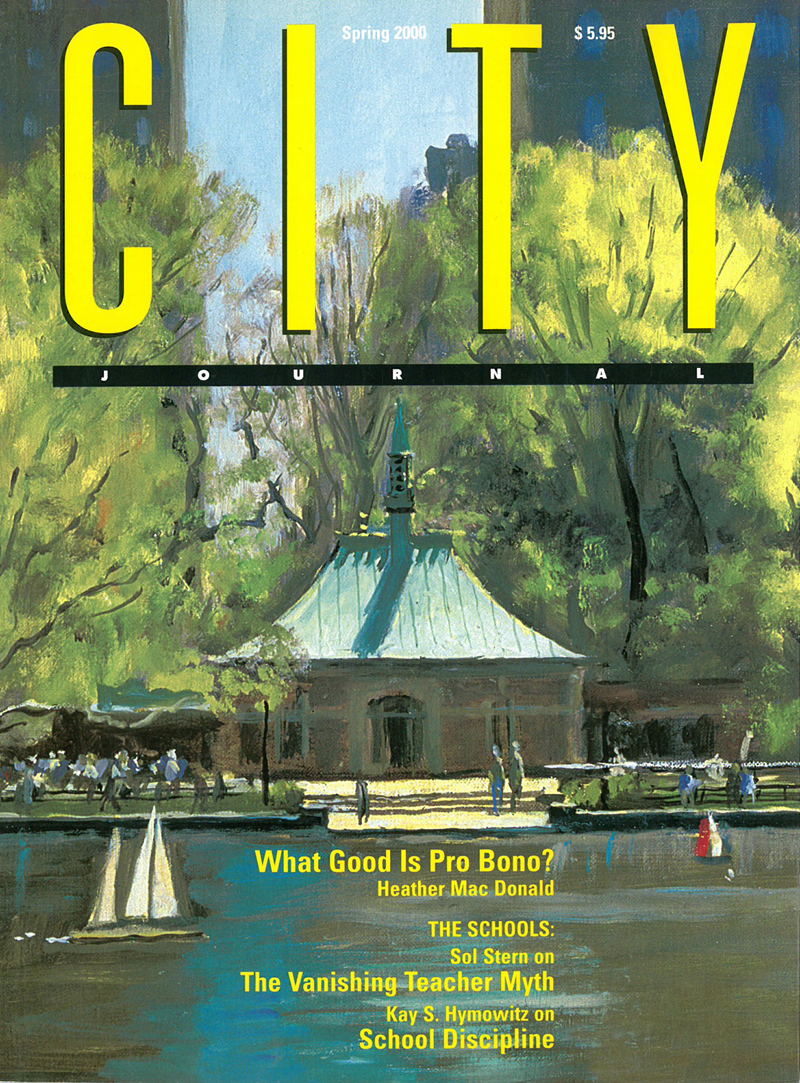By now all New Yorkers know of that extraordinary millennial apparition on the West Side: the Rose Center for Earth and Space at the American Museum of Natural History. The new planetarium would be a wonder at any time, but it is all the more remarkable to see it arise in the year 2000, for it defies so much of the received wisdom of our age.
For starters, its marvelous space show sweeps aside cherished intellectual orthodoxies. True, as we sink back in our commodious armchairs and watch the state-of-the-art Zeiss projector take us across the solar system, out of our galaxy, and into the vast cluster of galaxies of which we are a tiny part, we hear in the narration what sounds like trendy relativism about little us on our little world, a minute speck in a gigantic universe. How insignificant we are! Yet what comes across isn't insignificance at all. Instead, we can't help but marvel at the triumph of human intellect that has accomplished the science underlying this display: what a heroic labor of observation and interpretation has gone into producing this map of the visible universe; what ingenious feats of technology it must have taken to build the telescopes and satellites that allowed us to gather and reproduce all this information in such breathtaking verisimilitude.
The show briefly projects across the stars on the planetarium's dome the grid of coordinates used to locate an object's exact position in space: and momentarily the purely abstract, man-made construct by which human ingenuity has ordered and understood the world becomes as breathtakingly real as the world itself. It is another epiphany, making all of today's relativist chatter look appropriately foolish. There is a real world out there—real worlds upon real worlds, in fact—which we can know, if imperfectly. What we come away with is a sense both of the limits and the power of human reason: we feel both awe and confidence at once.
Remarkable too is the sheer ambition of the project—successfully realized. The planetarium is sure to become one of the city's don't-miss sights, drawing tourists and adorning postcards. That's due not only to the space show but equally to the building itself, a modern structure that even haters of modernism can admire. James Stewart Polshek's steel globe set in a sparkling glass cube is a landmark that evokes the music of the spheres, the astronomer's geometry, and the perspicuity of the universe as revealed by the planetarium.
For New York, the ambition to create a monument has long lay dormant. We have lived for generations, it seems, off the legacy of the robber barons and the other great early capitalists and speculators who gave us the Metropolitan Museum, the Public Library, Grand Central, the great midtown clubs, and our signature skyscrapers. When we have tried to create something new, as in Lincoln Center, the results have disappointed. But now, we ourselves have built something new and grand.
This is a great philanthropic achievement, a tribute to the vision and determination of such civic benefactors as Richard Gilder and the late Frederick P. Rose, who decided not just to spruce up but to tear down the old planetarium and put something better in its place, and who overcame New York's countless obstacles to getting anything built. They have shown that New York is still very much a living city, not a museum of twentieth-century capitalism.
Now Lincoln Center, prematurely aging, as modernist buildings do, needs a $1.5 billion makeover, its officials say. For that price, the Center's trustees could follow the planetarium's example: tear down the whole complex and build something grand and enduring. Were they to hire an architect like Quinlan Terry or Allan Greenberg to design it, New Yorkers yet unborn would have reason to bless their memory.
